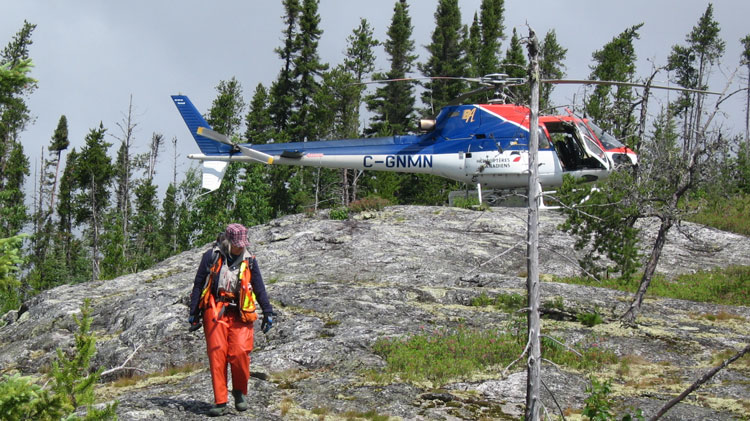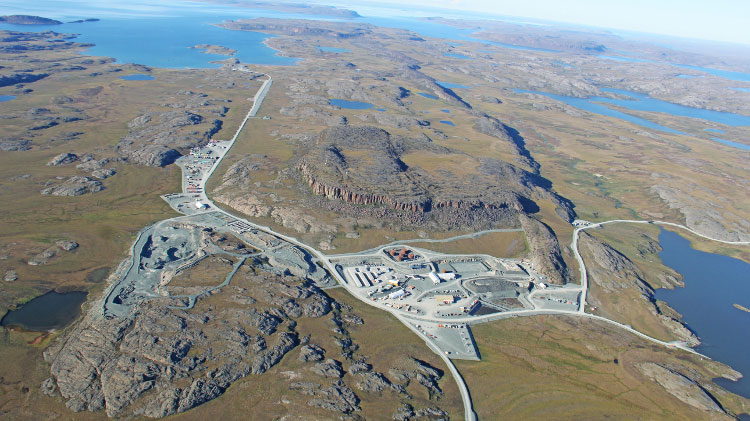A Canadian Northern Corridor Program concept image showing a multi-modal infrastructure corridor. Courtesy of the University of Calgary School of Public Policy
Canada’s approach to infrastructure investment in the Far North and Arctic regions has been piecemeal ever since the late 1950s, when John Diefenbaker’s “Northern Vision” faltered as recession took hold. Even that description may be generous. Companies have invested, remote mines have gone into production and governments have supported development. But while these efforts have been significant, it is hard to call them strategic or long term, and the resource potential of the Far North and Arctic—especially for base metals and critical minerals—has lingered as an opportunity waiting to make business sense.
At least until now. Infrastructure investment to support mine development in remote regions has moved up the priority list as Mark Carney’s government rethinks Canada’s role in global trade and national security in the wake of Donald Trump’s re-election as U.S. president.
The new policy focus has come with lists of projects that deserve attention—a road to Ontario’s Ring of Fire, renewal of the Port of Churchill in Manitoba, hydroelectric power and road projects in the territories and more. The challenge for Ottawa? Choosing which proposals, some of them decades old, offer the greatest value at a time of tight budgets and economic uncertainty.
Kent Fellows, an economist and director of the Canadian Northern Corridor Program at the University of Calgary’s School of Public Policy, offered a basic triage for the North’s infrastructure needs. “Transportation is the big one, and then energy,” he said. “The third thing is telecommunications and IT.”
That list is direct, perhaps, but Fellows acknowledged it is crude as well. Infrastructure is a nuanced subject that triggers multi-faceted questions. It is one thing to build a road or a port to serve a mineral deposit, but it may be a better thing to invest in projects that also create more widespread benefits—reducing food insecurity or the cost of living in remote communities, for example, or contributing to northern security and sovereignty.
“The opportunity is to collectively work together and coordinate, get some consensus around where the emphasis should be,” said Sean Boyd, former CEO and now chair of Agnico Eagle Mines. “There are so many angles here… If it’s not coordinated, then we’re not going to be as effective as we need to be.”
Weighing the options
Coordination, however, requires more than a clear understanding of stakeholder priorities and expectations. It also calls for a careful evaluation of opportunity costs and potential competitive risks.
The proposed Kivalliq Hydro-Fibre Link project is a case in point. The $3.2-billion project, which is led by Inuit-owned Nukik Corp., aims to build a 1,200-kilometre, 150-megawatt hydroelectric power transmission line with fibre-optic cable from Gillam, Manitoba, to Nunavut’s Kivalliq region. This would bring clean electricity and reliable internet to five Kivalliq communities and to the vicinity of Agnico Eagle’s Meliadine mine and Meadowbank Complex.
According to a report on the project in Up Here Business magazine in the summer of 2023, Nukik had lined up $2 billion towards project financing from the Canada Infrastructure Bank and private investors. If it can raise the remainder of the capital and build the line, it will deliver myriad benefits. The project will create jobs during construction and operation. Access to hydroelectric power will reduce the need for diesel to generate electricity in communities and at mine sites to such an extent that Nunavut will meet the territory’s entire carbon-reduction target in a single stroke. The addition of reliable high-speed internet service will also vastly improve the quality of health care, education and business opportunities, large and small.
It is reasonable to presume Agnico Eagle would become a customer for the hydroelectric project. But Boyd also sounded a note of caution of investment at that scale, pointing to the challenges of time and cost. “It’s also battling technology,” he said. “Maybe by the time it’s built, new technologies such as modular nuclear reactors could be an option.”
The challenge may be closer than it appears. The federal government’s new Major Projects Office (MPO) was launched in August to accelerate the development of “nation-building” strategic infrastructure; the first five projects referred to the MPO for consideration in September included the Darlington New Nuclear Project in Ontario, which aims to make Canada the first G7 country to have an operational small modular reactor.
“That’s one to keep an eye on,” Boyd said. “If we were to identify energy as being a key component, we need to understand more about the modular nuclear reactor opportunity.”
Partnerships and priorities
Detailed evaluation of the pros and cons of individual projects, moreover, is only one aspect of the challenge. Infrastructure investments on the scale required in northern Canada are likely to be met only by partnerships between governments, industry and communities, many of which will be covered under self-government agreements.
Long-standing plans to build a road into Ontario’s Ring of Fire, for example, may appear like a no-brainer for increasing Canada’s role as a supplier of critical minerals to global markets, at least from a business perspective. But that simple calculation also has to recognize the treaty rights of Indigenous peoples, rights that are affirmed in the Constitution. That may come with requirements for building stronger, more resilient communities in the region.
The same considerations apply to projects with strong Indigenous involvement, such as the Arctic Economic and Security Corridor proposal. The concept, which has been kicking around in various forms for decades, is now substantially led by Inuit-owned West Kitikmeot Resources. It calls for the construction of a deep-water port at Grays Bay on the Coronation Gulf, part of Nunavut’s central Arctic coastline, as well as a 227-kilometre all-season road running south to Contwoyto Lake, the northern terminus of the Tibbitt to Contwoyto Winter Road.
A second 400-kilometre road would also be constructed from Tibbitt Lake, N.W.T., about 80 kilometres east of Yellowknife, to meet the Nunavut road project. Together, they would open up the mineral-rich Slave Geological Province, home to several significant critical minerals and base metal deposits, as well as producing diamond mines and past-producing gold mines.
The Arctic Economic and Security Corridor has potential to support national security efforts as well as the mining industry, but Karen Costello, executive director of the NWT and Nunavut Chamber of Mines, sees benefits beyond national policy priorities. “If it includes being able to connect communities, and if it also includes some upgrades that include energy infrastructure, [the Arctic Economic and Security Corridor] has the potential to be a game changer for two territories,” she said.
But if infrastructure projects are evaluated on their contribution to healthier communities as well as the economic return from mine development, who should pay for them? In most cases, a company that develops a single project solely for the benefit of shareholders will cover its own costs. Governments have no role, unless there is a broader benefit to the national interest. That was the argument in the 1970s when Ottawa, seeking to explore the potential of High Arctic mining, provided financial support to develop the Nanisivik zinc-lead mine on Baffin Island.
Beyond resources
Today, the prospect of new northern roads or energy grids are tied much more closely to what Fellows called “diffuse benefits” that improve living conditions overall in remote communities. In that case, governments have a substantial role to play in partnership with the private sector. People may want a mining company’s road to also connect remote communities and improve living standards, or maybe a different routing opens the potential for multiple projects. In those cases, governments need to come on board as partners.
“If you do it correctly outside of the mining sector, you’re also advantaging some of these remote communities or assisting with northern security and sovereignty,” Fellows said. “You have benefits that occur all over the economy, not just in one sector or to one proponent.”
Agnico Eagle is taking a lead in this approach in developing its Hope Bay project in the Kitikmeot region of western Nunavut. The company is not asking for federal infrastructure support. But it is working to bring government to the table with a package of shared investments on the themes of housing, food security, education and health.
“We’re a big advocate of not forgetting the social infrastructure that’s required,” Boyd continued. “You can build a port or a road. There will be spin-off benefits to mines and communities.”
But without investment in communities, larger opportunities slip away. “We’ve always talked about mine building as community. And in the case of the North, it’s really nation building,” Boyd said.
None of the first five projects the federal government referred to the MPO in September are in the North, but they signal a focus on positioning Canada as a supplier of critical minerals, increasing trade capacity and developing new energy technologies. The press release announcing the list also gave a hat tip to the North, citing proposals such as the Arctic Economic and Security Corridor and the Port of Churchill as early-stage proposals with high potential. It also acknowledged the mineral potential of Ontario’s Ring of Fire.
The list showed clarity in the focus on strategic investments. How that momentum will play out in the North remains to be seen. The need for infrastructure—both economic and social—is urgent, but it is also expensive and complex. But momentum is growing. And with careful coordination, the North may yet have its Diefenbaker moment.




